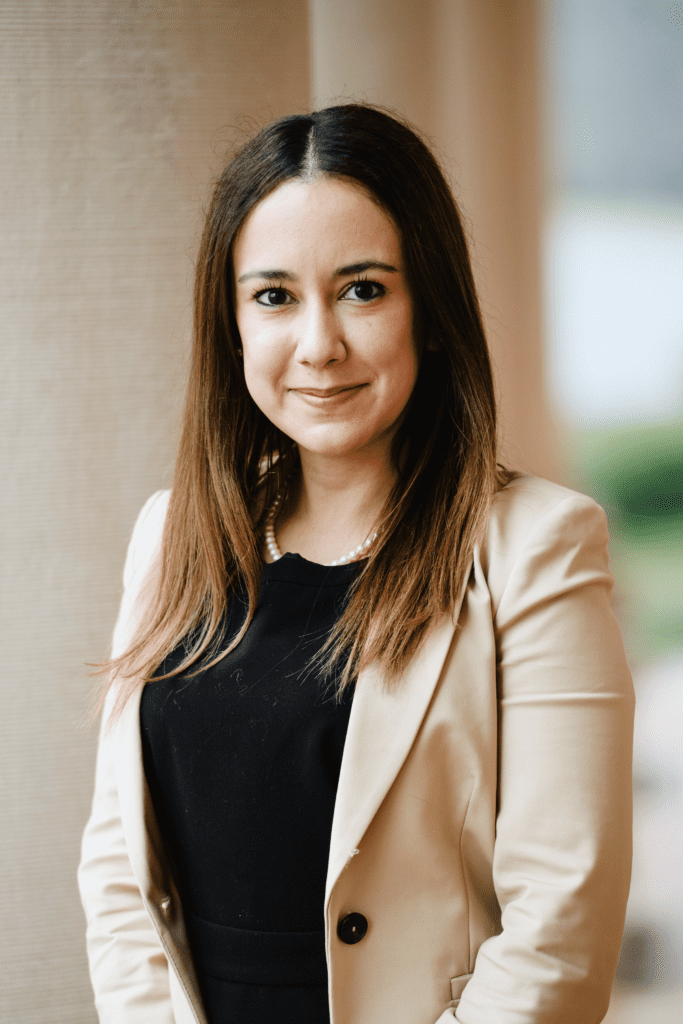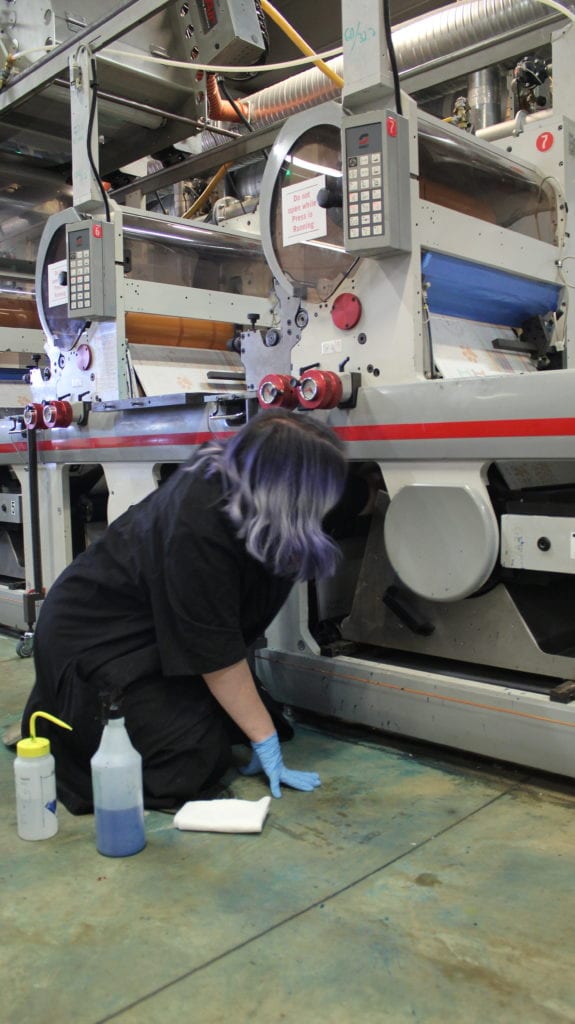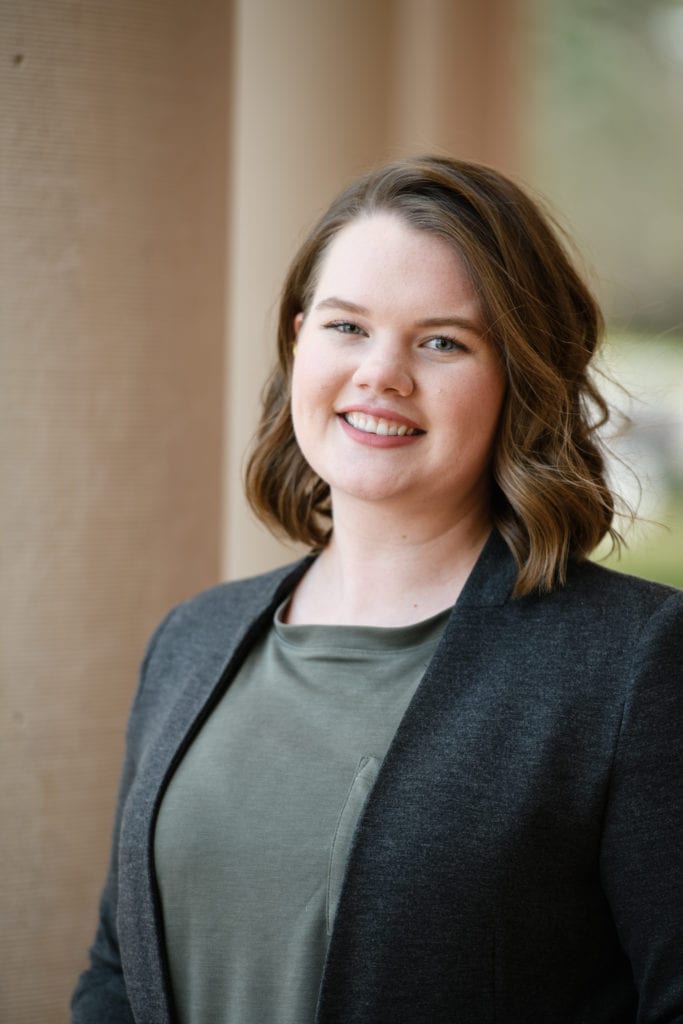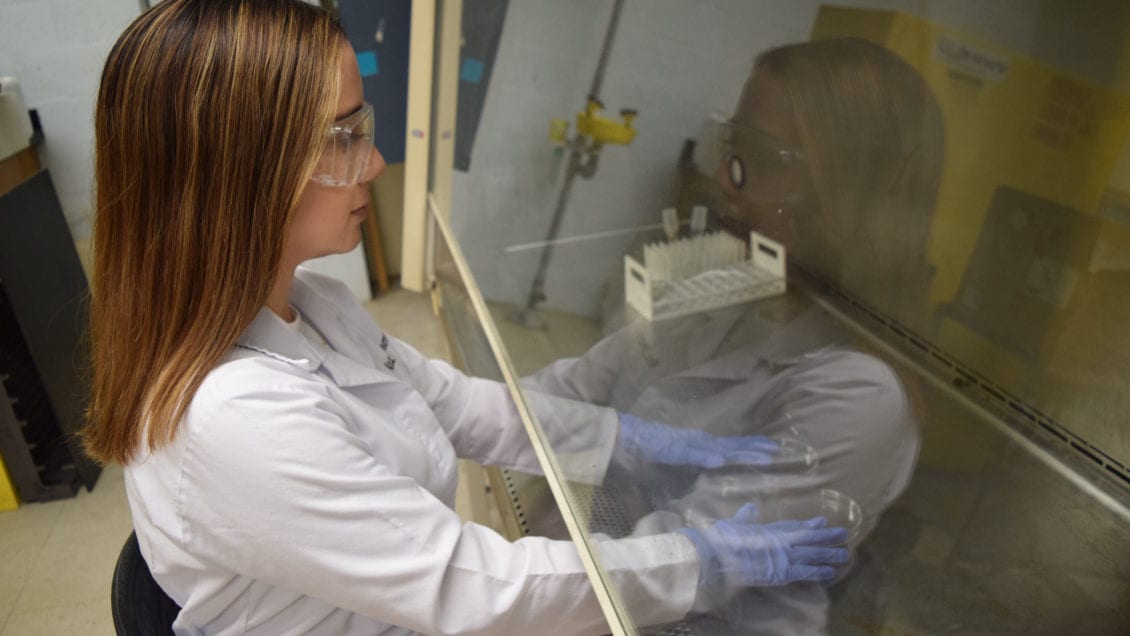From conception to reuse, a package travels a long way before it is emptied of its contents and hopefully discarded in the appropriate disposal bin. Traditionally, when we think of sustainable packaging we are quick to ask, can this be recycled? Recyclability is important and Clemson is a leader across the nation when it comes to recycling. But when we look at package production holistically we realize that sustainability has implications beyond just the materials phase. What happens in the pressroom where the packaging’s graphics are applied? How long will our food remain stable on the shelf in that package?
At Clemson University, the Food, Nutrition, and Packaging Sciences (FNPS) and Graphic Communications (GC) departments unite at the Sonoco Institute of Packaging Design and Graphics on campus to innovate sustainability throughout the packaging process. Clemson packaging and graphics faculty are in-sync with where the packaging market lies in sustainability terms and they encourage students to maintain a sustainable outlook and approach over the course of their projects and research.
Sustainable packaging means more than just recycling
During the “IoT: The Power of Connected Packaging” panel at Clemson’s inaugural FRESH Food, Packaging & Sustainability Summit in February, Jay Sperry, Platform Evangelist for Digimarc explained that packaging has historically had two primary verticals – aesthetics and performance. Now the focus is on packaging’s third pillar – data. An intelligent package contains a component that allows it to monitor the condition of the packaging.
Why is now the time for intelligent packaging?
Jay Sperry, Digimarc, 2021 FRESH Summit
1. Smarter food safety
2. Mislabeling can affect manufacturing and increase cost
3. Food recall impact
Clemson packaging Ph.D. candidate Ana Romero’s research looked at packaging indicators that can monitor food conditions using sustainable materials. Consumers are increasingly looking for food products that are safe to prevent foodborne illness (food poisoning). Romero created and characterized a pH color indicator to determine spoilage of beef in flexible packaging using sustainable materials. Romero’s novel technology has been submitted for a national patent.
“Bio-based materials are frequently renewable, non-toxic and non-harmful to nature,” Romero writes in her dissertation. Not only are consumers concerned about the safety of their food, they are increasingly aware and passionate about the packaging their food comes in and how package disposal will affect the environment. According to The Shelton Group 75% of consumers say they would stop buying from companies whose practices negatively affect people and/or the environment.
During a Sustainable Packaging Design Workshop hosted online by the Sonoco Institute in conjunction with the FRESH Summit, Clemson’s Dr. Heather Batt, senior packaging lecturer, noted that, “We know that packaging, while it does have an environmental impact, reduces waste and therefore ultimately has less of an environmental impact than if we didn’t have it at all.” According to the USDA, food waste accounted for more than 14 percent of human-related greenhouse gases in 2017.

“Many consumers don’t realize that packaging can actually reduce food waste, resulting in the reduction of food waste-related greenhouse gas emissions,” said Anne Barr, executive director of Sonoco FRESH. “Strategic packaging can protect food products from outside contamination and disease, prevent spoilage and increase shelf life, thereby reducing the amount of food that is thrown away. Ana’s research presents an innovative approach to supporting sustainable packaging goals.”
A recent article from the Sustainable Packaging Coalition makes clear that packaging solutions are critical to reducing food waste and ultimately protecting our environment. “Direct packaging solutions such as improved package design and active and intelligent packaging have a combined net financial benefit of $4.13 billion dollars. Changes to packaging design can also help divert 650,000 tons of food waste and save 120 billion gallons of water per year.”
From package design to package printing, lesser-known sustainability measures

Around 40 percent of today’s packaging is printed using a method called flexography. Flexographic (or “flexo”) printing deals in five main packaging markets: folding cartons, flexibles, corrugated boxes, multi-wall bags and tag and label. Clemson houses two narrow-web flexographic presses for testing and education, which are typically used to produce packaging labels. Labeling is considered critical to human health because of its tamper-proofing capabilities that provide safety for our food. Both graphics and packaging design students at Clemson receive hands-on experience with the flexo process thanks to the crossover between these two disciplines at the Sonoco Institute.
A recent phenomenon in flexo printing, especially in the tag and label market, involves the use of UV inks which can be cured using LED lamps. On a flexographic press, material is fed through at high speeds as colors are overlain to produce a final image. Rapid ink drying between color stations is critical to the quality of the print. UV LED ink drying is considered one of the most sustainable options for flexographic printers today thanks to the minimization of heat output and energy consumption, and elimination of mercury. Sponsors Fujifilm and Phoseon Technology (a finalist for the 2020 Label Industry Global Award for Sustainability) have outfitted print labs in the Sonoco Institute and Graphic Communications buildings with UV LED capabilities, where students can practice printing more efficiently and sustainably. The institute also recently opened an ink lab sponsored by Siegwerk, a leader in sustainable inks, where students can formulate energy-curable and other ink technologies.
GC Master’s student, Dovie Jeffcoat, is currently utilizing UV inks in her research with Fathom Optics to further develop a sustainable method of printing depth and motion effects for packaging labels.
“Fathom’s technique utilizes the interference of layered screen patterns, similar in idea to the way incorrect screen angles result in moiré,” explained Jeffcoat. “The first pattern is reverse printed with a white flood on transparent film. The second pattern is then printed on the opposing side of the substrate. The two interact with each other to result in a printed embellishment, which appears to move when rotated and tilted.”
Aside from utilizing UV LED inks for her research, Jeffcoat emphasizes that the process itself is sustainable because it produces less waste than traditional motion and depth effect printing methods.
“The more traditional method of printing motion graphics involves laminating a lenticular lens material onto a printed substrate, which uses more material and more polymer,” noted Jeffcoat. Fathom’s method of printing allows for the use of regular ink types, like UV, and a singular substrate where the pattern is printed front-and-back. Printing can also take place on biopolymer films, which add an extra measure of sustainability.

“In the past several years, student interest in sustainable print solutions has grown tremendously,” commented Dr. Liam O’Hara, Clemson graphics professor and chair of Jeffcoat’s research committee. “Dovie’s research on optimizing conditions for producing these motion and 3D special effects without additional materials applied to the packaging is particularly exciting.”
UV inks
UV inks, also known as energy-curable inks, are sustainable because they do not produce emissions when transforming into a solid. They can also be cured, or dried, using UV LED lamps which use less energy.
Packaging and graphics combine to work for people and the planet
“There are three major pillars to sustainability and these include economic, societal and environmental,” noted Batt during the packaging workshop. “We hear these discussed a lot as Profit, People and Planet – the three P’s.”
Raghu Chakravarthi, Portfolio Director for Tetra Pak Americas, emphasized during the FRESH Summit that packaging should not have a negative impact on the planet. Companies need to use renewable or recycled materials that are responsibly sourced in a way that protects biodiversity and nature as well as ensure safety, convenience and access while minimizing waste. Through initiatives such as the Sonoco Institute and Sonoco FRESH, Clemson is uniquely positioned to drive innovation and solutions for sustainable packaging.
Get in touch and we will connect you with the author or another expert.
Or email us at news@clemson.edu

